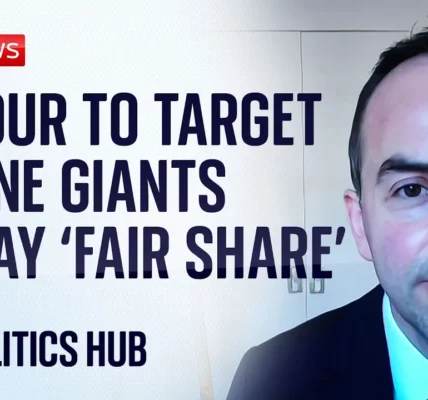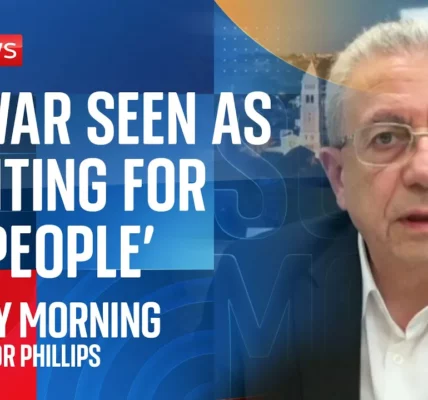Inside the Capacity Crisis of Prisons and the Early Release Scheme

This article delves into the ongoing capacity crisis within prisons, highlighting personal accounts from individuals affected by the early release scheme, and examining the implications for public safety and the criminal justice system.
Introduction
The prison system in many countries is facing an unprecedented capacity crisis, characterized by overcrowding and strained resources. Amidst this turmoil, governments have implemented controversial early release schemes aimed at alleviating pressure on the prison population. This article explores the experiences of one individual, referred to as Chris, who recently navigated the complexities of the early release process after serving a sentence for grievous bodily harm (GBH). Through his story, we gain insight into the chaotic environment within prisons, the response from the public, and the ongoing concerns regarding safety and rehabilitation.
Understanding the Early Release Scheme
The early release scheme was introduced as a measure to combat overcrowding in prisons, but it has sparked significant debate regarding its effectiveness and the potential risks it poses to society.
What is the Early Release Scheme?
This scheme allows certain prisoners to be released early based on specific criteria, primarily aimed at reducing the number of inmates in overcrowded facilities. The eligibility requirements typically include:
- Serving less than four years of a sentence.
- Not being classified as a sex offender or a terrorist offender.
- Not being a life-sentenced prisoner.
Implications of the Scheme
While the scheme aims to free up space for serious offenders, it has raised questions about public safety, especially concerning individuals who may pose a risk to vulnerable populations.
Chris’s Experience with the System
Chris, who had been incarcerated for two and a half years, shares a troubling account of his release process, which underscores the systemic issues at play.
Miscommunication and Confusion
Chris recounts a day filled with confusion, beginning when his family was prematurely informed about his release. This miscommunication highlights the chaotic environment within the prison system:
- His family received notification that he would be released.
- Chris, however, had not been informed of his imminent release.
- Hours later, he was informed that due to a mix-up, he would indeed be released, only to face further delays.
Staff Awareness and Preparedness
In discussing the staff’s awareness of the situation, Chris expressed doubt about their grasp of the release process, stating:
“It was all up in the air, and they didn’t really know what was going on.”
This sentiment reflects larger issues regarding the training and preparedness of prison staff in handling release procedures amid overcrowding.
Public Concerns and Safety Issues
Public reaction to the early release scheme has been mixed, with many expressing valid concerns regarding the safety of communities.
Concerns from Domestic Abuse Charities
Domestic abuse charities have voiced serious worries about the implications of releasing individuals with a history of domestic violence. A letter to the Justice Secretary highlighted the need for exemptions for domestic abuse perpetrators, stating:
“We are prioritizing solving a problem about prison overcrowding over the safety of victims.”
This perspective underscores the ethical dilemma faced by policymakers in balancing prison capacity with community safety.
High-Risk Offenders and Release Criteria
Reports from the Chief Inspector of Prisons have raised alarms over the early release of individuals deemed high-risk, including those with histories of domestic abuse. This situation presents a paradox where:
- Prison overcrowding necessitates early releases.
- Some of those released might pose a significant risk to the public.
The Government’s Position
The government has defended the early release scheme as a necessary measure to manage prison populations effectively. They have stated that:
Eligibility and Discretion
There are strict eligibility criteria in place, and the prison service retains discretion to prevent the release of individuals deemed unsuitable. Additionally:
- All released individuals will be subject to probation supervision.
- Stringent license conditions will be enforced to monitor behavior post-release.
Addressing Overcrowding
While the government aims to mitigate overcrowding, questions remain about the long-term effectiveness of these measures in ensuring public safety and rehabilitation.
Conclusion
The ongoing capacity crisis within the prison system highlights profound challenges that require urgent attention. The experiences shared by individuals like Chris illustrate the chaos and confusion that can arise during the early release process. As society grapples with the implications of these policies, it is crucial to consider the balance between managing prison populations and ensuring the safety of the public. For those concerned about the impact of early releases, engaging with local representatives and advocating for responsible criminal justice reform can be a vital step forward. Together, we can work towards a system that prioritizes both rehabilitation and community safety.
“`




